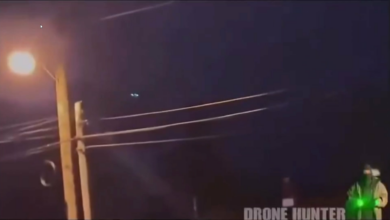The Overlooked Question Everyone Should Be Asking
Title: Why Is the Government Hesitant to Engage with UAPs? A Closer Look at UFO Reactions
In the realm of unidentified aerial phenomena (UAPs), particularly discussions surrounding UFOs, a fascinating angle to explore is not just the evidence itself, but the reactions—or the lack thereof—by our government.
Consider this scenario: earlier this year, a balloon believed to be a surveillance device from China floated ominously over the United States, specifically hovering near military bases and strategic targets. The response? The U.S. government deemed it a significant threat and subsequently shot it down, turning the incident into a highly publicized operation to recover debris.
Now, let’s juxtapose that with the multitude of UAP sightings reported by military personnel. These mysterious flying objects have been consistently observed darting around military installations, aircraft, and naval vessels. Reports have flooded Congress, and even the Executive branch has been briefed on these sightings.
Yet, despite this extensive documentation, engagement with these unidentified vehicles happens only in rare instances. This begs the question: why isn’t there a more proactive response to these phenomena?
There are several plausible reasons for this apparent reluctance:
-
Familiar Technology: One possibility is that the U.S. might already have its own advanced technology in play. If that’s the case, shooting it down would be unnecessary—and perhaps detrimental.
-
Friendly Relations: Another reason could be that these UAPs are recognized as belonging to a friendly nation or entity. If the government already knows who’s behind them, there would be no grounds for aggressive engagement.
- Caution with Unknowns: Finally, if these UAPs are indeed from an unknown or potentially hostile party, the government may simply be erring on the side of caution. Avoiding confrontation might be a strategic choice to prevent escalating tensions—after all, nobody wants to "poke the bear."
Interestingly, when it comes to known adversaries like China, Russia, or North Korea, the government’s response tends to be swift and decisive. This contrast raises an intriguing issue: why the disparity in engagement with UAPs compared to other potential threats?
As the conversation around UFOs and UAPs continues to evolve, understanding the government’s approach and the reasoning behind it may help untangle the mystery surrounding these aerial phenomena. Whether these UAPs represent unknown technology, friendly nations, or something entirely different remains to be seen, but one thing is clear: this topic is far from over.
Stay tuned as we navigate through these uncharted skies.




